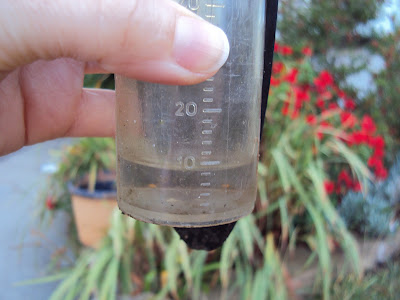Matthew Evans is back on our TV screens, charming us with tales of rural life in a too-green-to-be-true part of southern Tasmania, and showcasing local characters and food producers. Are you watching?
Some time between his first and second TV series, I dropped in to Matthew's country home. Okay, so it was with my parents and about 20 members of a community group they are part of that organises day trips to rurally-type places. Vineyards, historic farms, whiskey distilleries, olive and raspberry growers; that kind of thing. I've tagged along with them on other occasions; for instance when they visited the resurrected Oatlands Companion Bakery and Callington Mill. We tried our hand at baking sourdough bread with the patient, talented Graham Pritchard and while it was tremendous fun, I found out that I'm hopeless at working with bread dough.
Anyway, one cold day a few years ago, I bunked off work (my friend B came along, too) to visit Matthew's farm. He welcomed us at his gate and was completely gracious about a bunch of strangers wandering around his property and poking our noses into the pig pen, the chook yard and everything in between. We asked him questions but he asked as many in return, mining the experience and knowledge of the retired farmers in the group. He was as friendly and open as he appears on TV - isn't that a lovely thing?
So as we prepared to leave, I boldly asked Matthew if he would sign my lemon juice stained copy of his yoghurt cupcakes recipe. And then I boldly told him how I made them even lemonier by (accidentally) adding the lemon juice (meant for the icing) into the cake batter. I don't remember his exact response now, but he kindly signed the torn-out page for the loopy admirer before waving us goodbye.
Lemony yoghurt cupcakes
This made 12 small paper cup cakes and five normal sized cupcakes. The original recipe advised 12 large cupcakes.
- Preheat your oven to 180 and prep your muffin tins with baking cases or use those sturdy baking cups (or a mix of the two, as I did).
- Cream 125 gms soft butter with 1 cup white sugar.
- Beat in three eggs.
- Now use a spatula to stir thru the zest of two lemons and the juice of at least one lemon.
- Stir thru 3/4 cups of natural yoghurt or sour cream.
- Now fold in 1 and 1/2 cups of SR flour.
- Spoon the mixture into your baking cups or tins. Bake for 15-20 minutes (depending on their size) until cooked (a skewer will come out clean).
- These are lovely and buttery when eaten warm out the oven, but the lemon flavour becomes even more pronounced the next day. Magic!


















